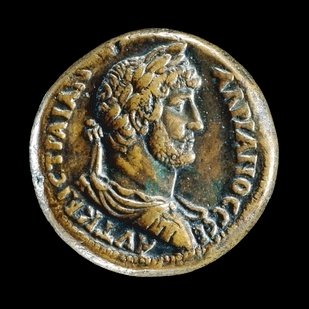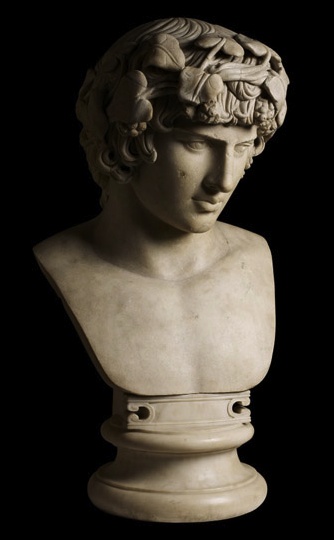Today I went to the BM’s exhibition about famous wall-builder Hadrian. Its not just the wall, though; he also built the Pantheon, as well as a staggering villa complex at Tivoli. He inherited the Roman Empire from Trajan when it was at its biggest and actually reduced its size slightly, abandoning some of the less manageable extremities and consolidating the borders. In fact, topically enough, on gaining power he quickly made the decision to withdraw the troops from Iraq.

I enjoyed the exhibition (pricey, though: £12 seems a lot to me), although the Romans make for pretty familiar subject matter: portrait busts, marble columns and memorial inscriptions. And in the specific case of Hadrian, I’ve been to the Pantheon and the villa at Tivoli, and I’ve read Marguerite Yourcenar’s novel, Memoirs of Hadrian, so this wasn’t one of those exhibitions which completely opened my eyes to a new subject. Still, the quality of objects on display was high, and I learnt a few interesting snippets along the way, like the fact that Hadrian had a distinctive crease in his earlobe, visible on the portrait busts, which is an indicator of heart disease.

I suppose the other thing that’s most famous about Hadrian is the fact that when his (male) lover Antinous drowned in the Nile, he founded a city named after him, Antinopolis, and encouraged the cult of Antinous which treated Antinous as a deity associated in some way with Osiris, the Egyptian god who was in charge of flooding the Nile. The homosexual relationship itself was apparently not unusual, but the very public grief and memorialising of it was. Because of the cult, there are many surviving statues of Antinous, and they have some fabulous examples in the exhibition.

The section about Antinous mentioned in passing that in Egypt at the time, the cult of Antinous was ‘in competition with Christianity’, which made me wonder how different the world would be if he’d been more popular than Jesus.
» The exhibition website doesn’t have much in the way of pictures (though there are some videos, which I haven’t looked at), but all these photos are part of the BM’s permanent collection, and are taken from their website. The coin showing Hadrian’s head is from Alexandria; the busts are Hadrian and Antinous.